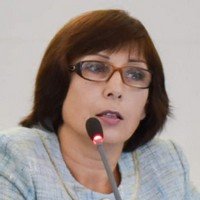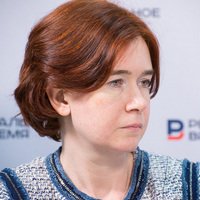''The government's plans will remain unfulfilled'': real incomes of Russians falling for the fifth year in a row
A growth, even if it happens, is going to be minimal in 2019
Russians' real disposable incomes have been declining for the fifth consecutive year (incomes less mandatory payments adjusted to consumer price index). This situation is observed amid a growth of wages — in 2018 their nominal growth was slightly less than 10%, and the real one — almost 7%, Rosstat stated in a recent publication on the socio-economic situation of the country. Read the details in the material of Realnoe Vremya.
''Wages are rising as a result of limited supply in the labour market and stagnation of labour force''
The agency registered a decline in real incomes for the first time in 2014 — by 0,7%. In 2015, the indicator decreased by 3,2%, and in 2016 — by 5,8%. In 2017, the decline amounted to 1,2%, and in 2018 – 0,2%. At the same time, wages continued to grow in 2018 — by 6,8%, according to the agency. This is more than double the figure in 2017 (2,9%).
According to chief economist at Alfa-Bank Natalia Orlova, this year's income dynamics is likely to be weaker than in 2018: ''It was the year of electoral cycle, and, in addition, inflation in the first half of 2018 was below 3% year-on-year. In 2019, the acceleration of inflation looks like a significant risk for the overall dynamics of incomes.'' The growth of wages (not incomes) not only in nominal but also in real terms is going to continue, as it happened in previous years, the expert believes.
 Associate Professor at the Plekhanov Russian University of Economics Lyudmila Ivanova-Shvets suggests that one shouldn't expect positive dynamics of real incomes in 2019. Although in 2017 and 2018 the government took measures that slowed down their decline a little (one-time payment to pensioners, indexation of wages, increase of the minimum wage to the subsistence minimum), they failed to get out of the negative values, says Ivanova-Shvets. A growth, even if it happens, will be minimal – 0,1-0,3%. ''In parallel with the measures taken to increase revenues, the government has adopted a number of changes that will leave plans for a growth of real incomes unrealized: such measures, first of all, include the growth of VAT, increase in tariffs, increase in the cost of housing services,'' she said.
Associate Professor at the Plekhanov Russian University of Economics Lyudmila Ivanova-Shvets suggests that one shouldn't expect positive dynamics of real incomes in 2019. Although in 2017 and 2018 the government took measures that slowed down their decline a little (one-time payment to pensioners, indexation of wages, increase of the minimum wage to the subsistence minimum), they failed to get out of the negative values, says Ivanova-Shvets. A growth, even if it happens, will be minimal – 0,1-0,3%. ''In parallel with the measures taken to increase revenues, the government has adopted a number of changes that will leave plans for a growth of real incomes unrealized: such measures, first of all, include the growth of VAT, increase in tariffs, increase in the cost of housing services,'' she said.
At the same time, there are some categories of the population whose salaries will be indexed this year: for example, nominal wages of public sector employees will increase from October 1 by 4,3%. However, the indexation will not give the expected growth of real incomes, as it is provided only in the lV quarter, continues Ivanova-Shvets. In addition, indexation is provided: for social benefits — from February 1 by 3,1%, pensions for non-working pensioners — from January 1 by 7,5%, for state and social pensions — from April 1 by 0,4%.
 The wages are growing as a result of limited supply in the labour market and the stagnation of the labour force, which decreased by 4% compared to 2007, says Natalia Orlova. ''The weak labour market is a consequence of demographic constraints. Russia's population has been growing slowly over the past 10 years and now stands at 145 million people, excluding Crimea. Nevertheless, the share of working-age population (aged from 15 to 65 years) decreased from 103 million in 2010 (72% of the total population of Russia) to 98 million people in 2017, or 68% of the population.'' This trend reflects the ageing of the Russian population (the proportion of those over 65 has continued to increase since 2011, accounting for 14% of the total Russian population, or 28% of the workforce). On the other hand, the share of young people is also decreasing — the number of Russians younger than 20 years decreased from 44 million in 1989 to 31 million in 2012 and amounts to 32 million in 2017, the expert said.
The wages are growing as a result of limited supply in the labour market and the stagnation of the labour force, which decreased by 4% compared to 2007, says Natalia Orlova. ''The weak labour market is a consequence of demographic constraints. Russia's population has been growing slowly over the past 10 years and now stands at 145 million people, excluding Crimea. Nevertheless, the share of working-age population (aged from 15 to 65 years) decreased from 103 million in 2010 (72% of the total population of Russia) to 98 million people in 2017, or 68% of the population.'' This trend reflects the ageing of the Russian population (the proportion of those over 65 has continued to increase since 2011, accounting for 14% of the total Russian population, or 28% of the workforce). On the other hand, the share of young people is also decreasing — the number of Russians younger than 20 years decreased from 44 million in 1989 to 31 million in 2012 and amounts to 32 million in 2017, the expert said.
''The shadow economy gives 39% of GDP''
Earlier, First Prime Minister of the Russian Federation Anton Siluanov strongly criticized the calculation methodology of the Federal statistical agency, calling it ''terrible'' and the instrumentation – outdated. In particular, Siluanov was not satisfied with the calculation of real incomes of the population: ''How to calculate it, probably only Rosstat knows. The quality of the calculation [of real incomes] is terrible,'' RBK quoted his words.
''The methods of the department should be improved, but in general I do not see big differences between the assessments that Rosstat gives and what is happening in reality,'' says Alexander Chekansky, the dean of the department of strategic management at the Institute of Business Studies of RANEPA.
 At the same time, Rosstat can not take into account the income of the shadow sector, but this is a lack of statistics in general, that it can operate only with the data that it owns, the interlocutor continues: ''The fact that we do not take into account incomes in the shadow sector is, of course, a lack of accounting, but it can hardly be blamed on Rosstat. Rather, it should be imputed to those bodies that allow such a huge shadow sector. After all, it is estimated that 39% of GDP is produced in the shadow economy.''
At the same time, Rosstat can not take into account the income of the shadow sector, but this is a lack of statistics in general, that it can operate only with the data that it owns, the interlocutor continues: ''The fact that we do not take into account incomes in the shadow sector is, of course, a lack of accounting, but it can hardly be blamed on Rosstat. Rather, it should be imputed to those bodies that allow such a huge shadow sector. After all, it is estimated that 39% of GDP is produced in the shadow economy.''
According to the International Association of Chartered Certified Accountants, at the end of 2017 Russia ranked fourth in the list of the largest shadow economies in the world after Azerbaijan, Nigeria and Ukraine.
According to the interlocutors of Realnoe Vremya, taking into account the shadow sector, the statistical indicators would be slightly higher. ''The shadow sector contributes to that the official data of the growth of real disposable income is lower than the real state of affairs. And, most likely, if the share of the shadow sector was lower, maybe a minimum real income growth would be demonstrated,'' Ivanova-Shvets notes.
In the May Decrees of Vladimir Putin there is a point about the need to ensure sustainable growth of real incomes. This is difficult to realize so far, says Alexander Chekansky. ''If we can ensure GDP growth above 2%, then maybe it will. But in the current situation, the implementation of this task is highly unrealistic.''
 According to the monitoring of economic situation in Russia, carried out by the Institute of Social Analysis and Forecasting at Ranepa and Gaidar Institute (the author of the relevant article — well-known expert in the field of socio-economic development of regions Natalia Zubarevich), in January-August 2018 in 61 regions of the Russian Federation real incomes continued to fall. For example, the decrease reached 6-9% in Novgorod Oblast, Ivanovo Oblast, Vologda Oblast, Kostroma Oblast, Yaroslavl Oblast, Magadan Oblast. However, the reasons for this decline in these regions is difficult to determine because of the imperfection of regional statistics, said Zubarevich.
According to the monitoring of economic situation in Russia, carried out by the Institute of Social Analysis and Forecasting at Ranepa and Gaidar Institute (the author of the relevant article — well-known expert in the field of socio-economic development of regions Natalia Zubarevich), in January-August 2018 in 61 regions of the Russian Federation real incomes continued to fall. For example, the decrease reached 6-9% in Novgorod Oblast, Ivanovo Oblast, Vologda Oblast, Kostroma Oblast, Yaroslavl Oblast, Magadan Oblast. However, the reasons for this decline in these regions is difficult to determine because of the imperfection of regional statistics, said Zubarevich.
In Sevastopol and the Republic of Crimea, according to her data, revenues showed the fastest growth after a significant increase in the volume of transfers — by 17% and 5%, respectively. ''Multidirectional trends in the largest agglomerations are within the statistical error: in Moscow, revenues were decreasing (0,2%), in St. Petersburg they were growing slightly (0,5%), and in Moscow Oblast the growth was more noticeable (2,0%),'' the publication says.
Among the federal districts, income growth was observed only in the Southern Federal District (1,7%), in all the rest there was a decline, and the worst result was shown by the North Caucasus (-1,9%), Zubarevich notes in the article. In the Volga Federal District, the decline in this period was 0,6%.